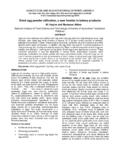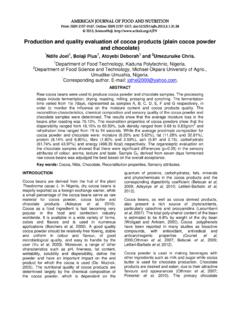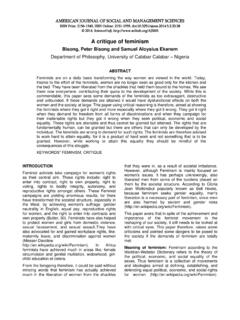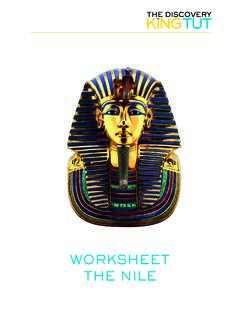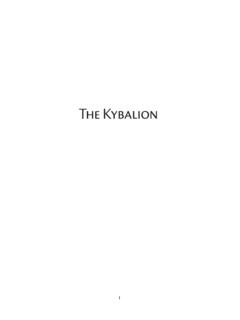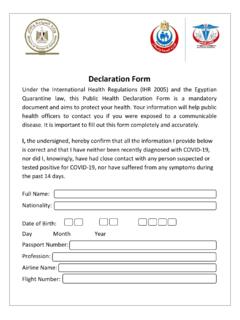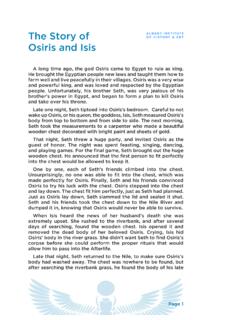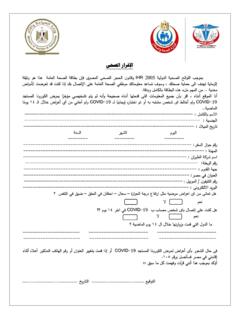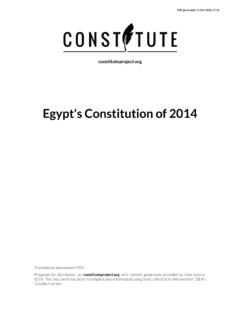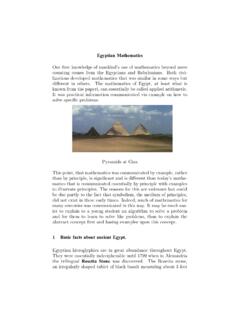Transcription of Religion and politics in ancient Egypt
1 AMERICAN JOURNAL OF SOCIAL AND MANAGEMENT SCIENCES ISSN Print: 2156-1540, ISSN Online: 2151-1559, 2012, ScienceHu , Religion and politics in ancient Egypt Etim E. Okon Department of Religious and Cultural Studies, University of Calabar, Calabar, Nigeria. ABSTRACT The aim of this paper is to examine the pervasive influence of Religion on politics in a monarchical ancient African kingdom. After a critical reflection on the mythology and cultus of the Sun-God, the apotheosis of the Pharaoh and the cult of the dead in ancient Egyptian society, it was found that Religion was indispensable in ancient Egypt . Religion and politics in ancient Egyptian society were inseparable. ancient Egyptians were incurably religious. Social and political life was a religious phenomenon. The king of Egypt , Pharaoh was not only despotic, but comprehensively authoritarian.
2 ancient Egyptian society was a monarchy. The idea of democracy was unknown in ancient Egypt . Key words: Religion and politics in ancient Egypt ; Egypt and the Sun-God; Egyptian Mythology; INTRODUCTION Religion was the dominant social force in ancient Egypt . Religious influence was pervasive affecting almost everything. Egyptian Religion developed from simple polytheism to philosophic monotheism, with every community having a guardian deity which personified the powers of nature. ancient Egyptian literature and philosophy had religious undertones. ancient Egyptian art was deliberately an expression of religious symbolism. Egypt , like any other African state was deeply religious, with every city and town having its own peculiar deity as the Lord of the city . The list of gods found in the tomb of Thutmose III shows that Egyptian polytheistic cultus had up to seven hundred and forty deities.
3 The gods are portrayed in a marital relationship with the goddess who bore them a son, which resulted in the formation of a divine triad, where the father was not always a chief, but also plays the role of prince consort, and the principal deity functioned as the goddess. The chief gods dwelt in a secluded temple, the priests worshiped, awoke the gods each morning with a song, bathed, dressed and fed them. The priests acted as representatives of the pharaoh, who was regarded as a living god the son of the sun god- Ra (Aid to Bible Understanding 492). The mythology and cultus of the sun-god: Archaeological evidence of Egyptian religious statues, religious paintings, art and writings has not sufficiently guided us to discover the actual religious beliefs of ancient Egypt .
4 But it is glaring that there was lack of unity of belief because of regional differences. It is also evident that even though the god Ra, was known by seventy-five different names, very few of the hundreds of deities were worshiped nationally. The most influential pantheon was made up of the trinity Osiris, Isis (his wife), and Horus (his son). Egyptians also worshiped the cosmic gods under the leadership of Ra, the sun-god, which also included the worship of the gods of the moon, sky, air, earth and the Nile River (Aid to Bible Understanding 492). Perhaps the most important Egyptian strand of Religion was the Osiris cult which started as nature Religion . Osiri was personified by the growth of vegetation and life-giving powers of River Nile. The myth of Osiris death and resurrection has it that Osiris was the king of Egypt , who killed his brother Seth, also a god.
5 Osiris body was butchered into pieces and scattered all over the country. Osiri was a good king, who trained his people in the art of farming, practical arts and made laws for peace and order. His brother Set killed him and butchered his body into pieces. His wife who doubled as his sister, searched and found the pieces body, put them together, and restored his body miraculously back to life. The risen god came back to power as king, ruled for a short period and descended to the world beyond as the judge of the dead. His son, Horus who was born after his death grew up, and avenged his father s death by killing Set. Egyptians knew that the Osiris legend was a myth. Initially, the death and resurrection of Osiris was interpreted to symbolize the recession of the Nile in the autumn and the Am. J. Soc.
6 Mgmt. Sci., 2012, 3(3): 93-98 94 beginning of the flood in the spring. With the usual metamorphosis of Religion , the human qualities of Osiris reflected the paternal solicitude and affection of Osiris for his subjects..the faithful devotion of his wife and son-appealed to the emotions of the average Egyptian, who was now able to see his own tribulations and triumphs mirrored in the lives of the the death and resurrection of Osiris came to be regarded as conveying a promise of personal immortality for man (Burns 35). As Osiris triumphed over death, and the grave, even so, those who follow his footsteps shall inherit eternal life. The victory of Osiris posthumous son, Horus over Set was a miniature of the ultimate ascendancy of good over evil in the cosmic struggle. It was at the end of the middle kingdom and in the beginning of the Empire that Egyptian Religion attained its highest perfection in the merger of the solar faith with the cult of Osiris.
7 The unique status of Re as the god of the living, and epitome of good in the world was equated duly with the functions of Osiris as the giver of personal immortality and judge of the dead. Folk cults affected the implementation and propaganda of state Religion . Images of some deities were embossed in official cult. Fertility deities in ancient Egypt included Min, Amon, Khnum, Isis, among others. But with time Osiris emerged as a dominant influence in folk agricultural belief. Osiris the cult of fertility was originally the local patron god of Busiris (Jedu) in Delta, and was always portrayed with Lotus, or grape vines. Archaeologists have discovered the silhouettes of Osiris that were made out of sown wheat on a layer of soil that was sprinkled onto a special wooden frame. The sprouted grains created a vivid image of the god (Tokarey 184).
8 ancient Egyptians celebrated annually the death and resurrection of Osiris. The festivities that were organized according to the moon calendar which lasted eighteen days, involved ritual ploughing and sowing. Segei Tokarey has described the myth of Osiris as a graphic account of the transitions which grains undergoes from the time of planting to sprouting The folk cult of Osiris represented a variation of the popular ancient agricultural cult of dying and resurrecting spirit of plant life (185). Osiris was not only the god of agriculture and vegetation, but also the god of judgment over the dead. Osiris was married to the goddess, Isis who was the chief of goddess. Their son is always pictured as a man with a hawk s head (Clement 46). There was a totemic dimension in Egyptian traditional Religion - animal veneration.
9 Polytheism in ancient Egypt degenerated to the worship of sacred animals. Sacred animals in ancient Egypt included the cat, hawk, ibis and crocodile. Prominent gods were presented as having the human physique with the head of animal or bird. The god, Horus was represented with a falcon s head. Thot had the representation of the head of an ibis, or ape. The gods were thought to incarnate in the body of animals. The belief that such animals as cats, baboons, crocodiles, jackals and various birds were sacred by virtue of their association with certain gods resulted in the Egyptians mummifying literally hundreds of thousands of such creatures, burying them in special cemeteries (Aid to Bible Understanding 493). The cult of the dead: The king was the link to the gods. Egypt s kings identified fully with the gods.
10 Menes declared himself as the two ladies, that is, the goddesses who represented Upper and Lower Egypt . Since the king was divine, vast resources of the state were concentrated to glorify the throne and accord proper homage to the king. Egyptian social and religious life was pre-occupied with preparation for the afterlife. From the period of the Old Kingdom, Egyptians believed that dead bodies must be preserved to ensure the continued survival of Ka, the indestructible essence, or the vital life force of the deceased. In 3200 , and at the peak of Egyptian civilization, the cult of the dead was established, which culminated into the process of mummification where pyramids were erected to house the remains of the kings. Philip Bishop writes: The great pyramids at Giza were gigantic constructions of limestone block.

